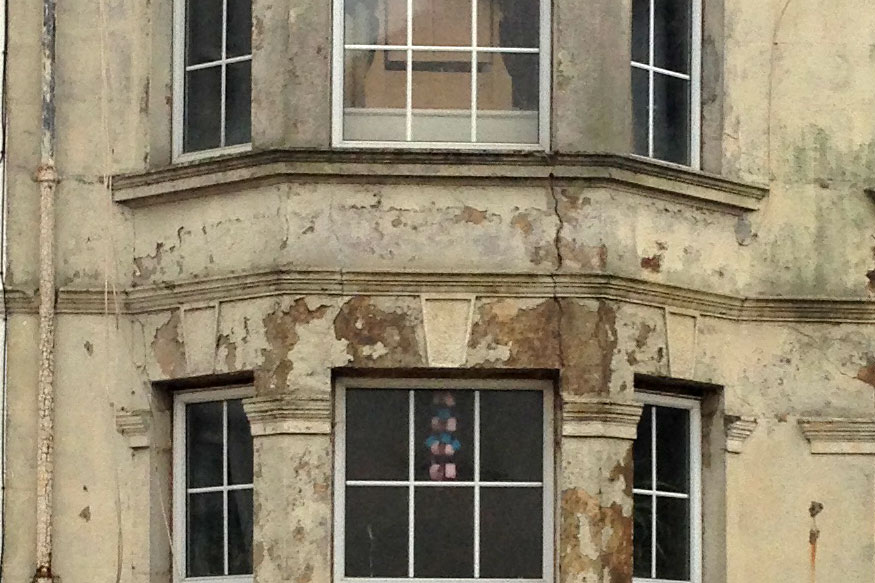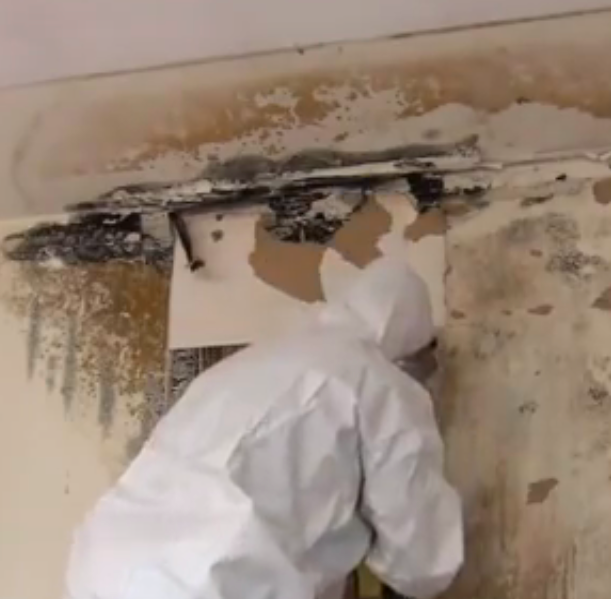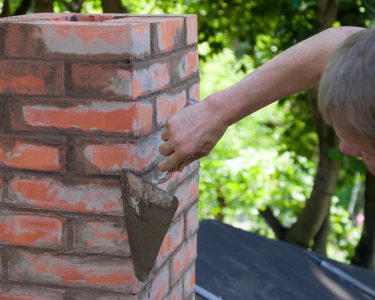Renovations breathe new life into your New York City home. But you need to make sure it’s not the wrong kind of life: mold. That’s where NYC mold inspection and testing come in. It’s an important but often overlooked step that can have serious health consequences.
That’s because mold doesn’t just grow in abandoned basements. It hides behind walls, under flooring, and inside ventilation systems. This is especially true in homes that have dealt with leaks or humidity. You may not see it until demolition begins, and by then, it’s already spreading.
That’s why you should always have mold inspection and testing done before remodeling in NYC. You need to know what’s behind your walls before building on top of it. Otherwise, you risk delays, extra costs, and even health problems down the line.
What’s the Big Deal with Mold?
Mold is a type of fungus that grows anywhere there’s moisture and organic material. In NYC homes, that means bathrooms, basements, under sinks, or around old windows. It spreads by releasing spores, which are tiny particles that float through the air and settle on surfaces.
You might not even notice it at first. Mold doesn’t always smell, and it can hide behind clean-looking walls. But once it takes hold, it spreads like wildfire. Any leaks, high humidity, or water damage adds fuel to that fire.
Imagine you’re redoing your kitchen and pull out old cabinets. Behind them, you find black spots crawling up the drywall. That’s mold. Disturbing it can send spores throughout your home, affecting the air your family breathes.
Mold Is More Common in NYC Than You Think
In a city like New York, mold issues are surprisingly common. Classic NYC characteristics like older buildings, humid summers, and tight spaces are perfect breeding grounds for mold. Even newer buildings aren’t immune. Many mold complaints come from properties less than five years old.
Common causes include leaking pipes, roof damage, poor ventilation, and past flooding. Some apartments even come with hidden issues from previous tenants or contractors cutting corners.
If you notice a musty smell in your new Manhattan condo, it may be one of the common signs you might need a mold inspection in your NYC apartment. It could be caused by a leak behind the wall that was never fixed, with mold growing ever since.
Mold Can Affect Your Health
Mold is more than just a structural problem. It’s a health risk. When spores become airborne, you breathe them in without realizing it. For many people, this leads to symptoms that feel like allergies or the flu. In reality, mold could be affecting the air in your home every single day.
Common symptoms of mold exposure include:
- Coughing or sneezing
- Runny nose or nasal congestion
- Itchy, red, or watery eyes
- Skin rashes or irritation
- Headaches or migraines
- Wheezing or shortness of breath
- Fatigue or dizziness
Some groups, like children, seniors, people with asthma, or anyone with a weakened immune system are especially vulnerable to mold’s adverse effects.
Noticing yourself or a loved one getting congested after a renovation exposes a thread to pull on. It could lead to learning there’s mold behind the tiles and in the air ducts, which you never would have caught without an inspection.
Even if you don’t have symptoms right now, long-term mold exposure can increase your sensitivity and make you more reactive over time.
NYC Laws Require Mold Testing
You might be suprised to learn that mold inspection and testing in NYC is required by law in some cases. Homeowners, landlords, and property managers need to understand the city’s mold laws before starting any renovation.
Local Law 55, also called the Asthma-Free Housing Act, requires building owners to inspect for indoor allergens, like mold, every year. If a tenant complains, or if there’s visible mold in the unit, landlords must take action to fix the issue.
Failure to do so can lead to Class C violations, which are considered hazardous. Fines can reach up to $10,000. Furthermore, owners must provide proof of correction to the Department of Buildings.
Let’s say you own a rental unit in the Bronx, and a contractor finds mold behind the shower wall. You’re now legally obligated to follow testing and remediation steps. If you don’t follow the proper process, you could face legal consequences, even if your tenant never filed a complaint.
NYC law also requires mold assessment and remediation to be done by two separate entities. You can’t use the same company to do both—it has to be two separate licensed professionals.
Why Test Before You Renovate?
Renovation work often means tearing into walls, lifting floors, or opening up ceilings. Those are the places mold likes to call home. You could stir up spores and spread them throughout your home if you don’t test beforehand.
Pre-renovation mold testing shows you what’s happening behind the scenes. If there’s no mold, great. You can move forward with peace of mind. But if there is, catching it early means fewer surprises, lower costs, and less risk to your health.
It’s like setting a foundation before building. You wouldn’t install brand-new hardwood floors over a rotting subfloor. So why renovate over hidden mold?
What Happens During a Mold Inspection?
A professional mold inspection is more than just a quick glance at your walls. It’s a detailed process designed to find hidden moisture, identify mold types, and prevent future issues. This is especially important before you start any renovation.
Here’s what you can expect during a standard mold inspection in NYC:
- Visual walkthrough of high-risk areas like bathrooms, basements, and around windows
- Moisture mapping using specialized tools to detect hidden water damage
- Air and surface sampling to test for mold spores—both visible and invisible
- Lab testing to determine the mold species and whether it’s toxic
- Digital photos and documentation of problem areas
- A detailed report with findings, health risks, and clear next steps
For example, let’s say you’re flipping a property in Queens. Your inspector finds elevated mold spore levels in the living room air. Even though no visible mold is present, the test results confirm an issue in the HVAC system. Without testing, you wouldn’t have known until after complaints. Or a lawsuit.
A mold inspection shows you where the problems are, what caused them, and how to fix them before they impact your project.
When Is Mold Testing Most Important?
While mold testing is a smart move before any renovation, there are certain situations where it’s absolutely essential. The following projects are more likely to uncover hidden mold, or accidentally spread it.
Here are the top times to schedule a mold inspection:
Bathroom remodels: Bathroom remodels are exposed to frequent moisture, making them prime spots for mold. Learn about the most common bathroom remodeling mistakes and how to avoid them to ensure your project stays on track.
Basement renovations: Basement renovations often have past water damage, humidity issues, or poor airflow. If you’re still on the fence, consider whether it’s worth renovating your basement in the first place.
Wall or ceiling demolition: Tearing out drywall or plaster can release hidden spores into your home’s air. Testing before demolition helps contain the problem.
Pre-sale upgrades or staging: Planning to sell your home? Mold issues discovered by buyers can delay closing, or even kill the deal.
Avoid the guesswork. If your renovation touches water lines, walls, or ductwork, it’s time to test.
What If You Find Mold During Renovation?
Finding mold in the middle of a renovation can be stressful, but it’s not the end of your project. With the right professionals, it can be handled safely, quickly, and legally.
Here’s what usually happens next:
- The area is sealed off using heavy-duty plastic sheeting to keep mold spores from spreading to other rooms.
- Contaminated materials like drywall, baseboards, or insulation are removed and properly disposed of.
- HEPA air scrubbers and ventilation systems are used to clean the air and trap floating spores.
- Antimicrobial solutions are applied to kill remaining mold and prevent regrowth.
- A sealer or encapsulant may be added to strengthen surfaces and lock out future moisture.
For instance, let’s say you’re halfway through a floor-to-ceiling kitchen remodel in Staten Island. Your contractor finds mold behind the backsplash and halts the work. A certified remediation team comes in, clears the mold, and performs post-cleanup testing to make sure it’s safe to continue. If you’re unsure what this process involves, learn what a licensed mold remediation specialist actually does during cleanup.
Of course, it adds time and money to the renovation process. But it pales in comparison to what you could deal with down the line when it comes to your money, health, and legal standing.
What Happens If You Skip Mold Testing?
Skipping mold testing before a renovation might seem like a way to save time or money, but it often backfires. What starts as a simple remodel can quickly turn into a costly, stressful ordeal.
Here’s what can happen:
Health problems: Mold exposure can cause chronic coughing, fatigue, headaches, or more serious respiratory issues especially for kids, seniors, or people with asthma.
Renovation delays: If mold is found mid-project, everything stops until remediation is complete. That means missed deadlines and extra labor costs.
Legal trouble: In NYC, landlords and property owners can be fined or sued for ignoring mold issues—especially under Local Law 55.
Damaged investments: Imagine spending $40,000 on a kitchen remodel, only to have to rip out brand-new cabinets because mold was sealed behind the wall. It’s one of several costly mistakes homeowners make when remodeling their kitchen.
The cost of testing upfront is minor compared to fixing a problem after the fact.
How to Choose the Right Mold Testing Expert in NYC
Not all mold inspectors are created equal. In a city like New York, where mold laws are strict and buildings vary wildly in age and condition, it’s important to hire someone who knows what they’re doing.
Here’s what to look for when choosing a mold testing professional:
NYS licensing: Make sure they’re certified by New York State as a licensed mold assessor. This is required by law.
Independent testing: Choose a company that sends samples to an independent lab. This ensures accurate, unbiased results.
Detailed reporting: Your inspector should provide a full report with lab results, photos, and clear recommendations. It should be more than just a checklist.
NYC experience: Look for someone who knows the ins and outs of Local Law 55, DOB guidelines, and how to test in co-ops, brownstones, and high-rises.
Post-remediation clearance: If mold is found and remediated, you’ll want the same expert (or their partner firm) to confirm the job was done right.
Let’s say you’re renovating a unit in a prewar building on the Upper East Side. You hire a mold inspector who skips the HVAC system. Later, you discover spores were circulating through the vents. Hiring a licensed, experienced expert could’ve prevented that costly oversight.
Mold testing isn’t just a checkbox. It’s a layer of protection for your health, your home, and your renovation investment.
Renovate with Confidence
In a city where every square foot matters and every project carries a hefty price tag, it pays to do things right from the start. Mold may be out of sight, but it should never be out of mind. This is especially true when you’re tearing into walls, updating plumbing, or improving ventilation.
By making mold inspection and testing part of your NYC renovation plan, you’re not just protecting your investment. You’re creating a safer, healthier space for yourself and anyone who walks through your door.
Before the dust flies and the tile comes up, take one simple step: test. It could save you thousands, and the stress it saves you could be worth even more.





